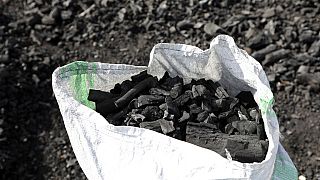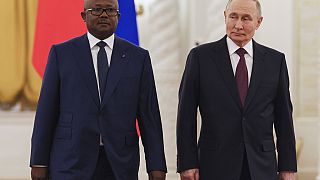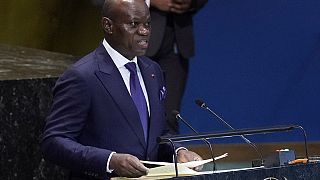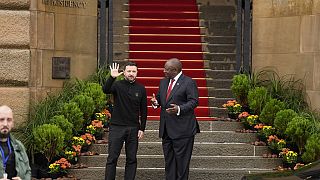renewable energy
The world installed 117 gigawatts of new wind power capacity in 2023, a 50% increase from the year before, making it the best year for new wind projects on record, according to a new report by the industry's trade association.
The latest Global Wind Report, published Tuesday by the Global Wind Energy Council, explores the state of the global wind industry and the challenges it's facing in its expansion.
The increase in wind installations “shows that the world is moving in the right direction in combating climate change,” the report said.
But the authors warned that the wind industry must increase its annual growth to at least 320 gigawatts by 2030 in order to meet the COP28 pledge to triple the world’s installed renewable energy generation capacity by 2030, as well as to meet the Paris Agreement’s ambition of capping global warming to 1.5 degrees Celsius (2.7 Fahrenheit).
“It’s great to see wind industry growth picking up, and we are proud of reaching a new annual record,” said GWEC CEO Ben Backwell, “however much more needs to be done to unlock growth.”
Still, the report shows that wind is becoming “better understood and appreciated across the globe for the value it brings as a renewable energy source,” said George Aluru, CEO of the Electricity Sector Association of Kenya, an industry body for private investors in electricity.
“This increased renewable energy supply supports climate goals in line with ensuring sustainable development,” he said.
With the growing impacts of climate change, wind power and other renewable energy sources are seen as a key to reducing electricity generation from fossil fuels and mitigating climate change. Renewables are the cheapest form of electricity in many parts of the world and among the cheapest in most others.
The global cumulative wind power capacity now totals 1,021 gigawatts.
Christian Andresen, research manager at SINTEF Energy Research, a Norway-based independent institute for applied research in the energy sector, said the report shows that the wind industry is “picking up pace” by attracting investments and gaining maturity, and that may lead to a snowball effect leading to future growth.
For the planet, he said, it indicates that it is possible to ramp up to reach climate targets.
“This is an important building block in the transition towards a net-zero emission society,” said Andresen.
As was the case in 2022, China led all other countries for both new onshore and offshore wind power installations in 2023. It had 65% of new installations, and was followed by the U.S., Brazil and Germany, respectively. Together, these four countries accounted for 77% of new installations globally last year.
The report notes that growth in wind power installations is highly concentrated in a few big countries and links that to strong market frameworks to scale wind installations in those countries. The top five markets at the end of last year remained as China, the U.S., Germany, India and Spain.
Still, some other countries and regions are coming up, having witnessed record levels of growth in 2023.
Africa and the Middle East installed nearly 1 gigawatt of wind power capacity in 2023, almost triple that of the previous year. With upcoming projects in South Africa, Egypt and Saudi Arabia, the report predicts that new onshore wind additions for Africa and the Middle East will grow fivefold by 2028 compared with 2023.
Some of the markets to watch include Kenya, where windpower provides around 17% of electricity, the report said. The country has the largest wind farm in Africa, the 310-megawatt Lake Turkana Wind Power Project, and the report notes new planned large-scale wind projects in the country, including a 1-gigawatt wind park by local power generator KenGen.
But building wind power installations is expensive and entails high up-front investments, and emerging and developing countries face higher cost of capital and pay higher loan rates to build out their wind.
Wind energy also faces supply chain and grid challenges, and innovation in the electricity system is needed to integrate intermittent wind energy onto the grid while retaining reliability, said Erin Baker, a professor of industrial engineering and operations research at the University of Massachusetts. Offshore wind, she said as an example, has some very specialized equipment and manufacturing, and also requires expertise in finance and business models.
But the accelerating growth of wind energy, as shown in the report, means that countries are developing the supply chains needed to keep this growth up, and it will “almost certainly” lead to reductions in cost and improvements in the technology as more and more is built around the world, she said.
“The recent growth, and nations support for the wind industry, are hopeful signs that the supply chain is being established,” said Baker.











Go to video
Mission 300 Africa Energy Summit: Driving Energy Access Across Africa
01:00
Ursula von der Leyen reaffirms EU's commitment to Paris climate agreement
01:15
Trump signs executive order directing US withdrawal from the Paris climate agreement
01:37
Saint Helena: how a tiny island is trying to achieve carbon neutrality
01:45
Scientists warn of planet exceeding 1.5°C limit
11:07
Egypt's Economy Hard Hit by Gaza War [Business Africa]